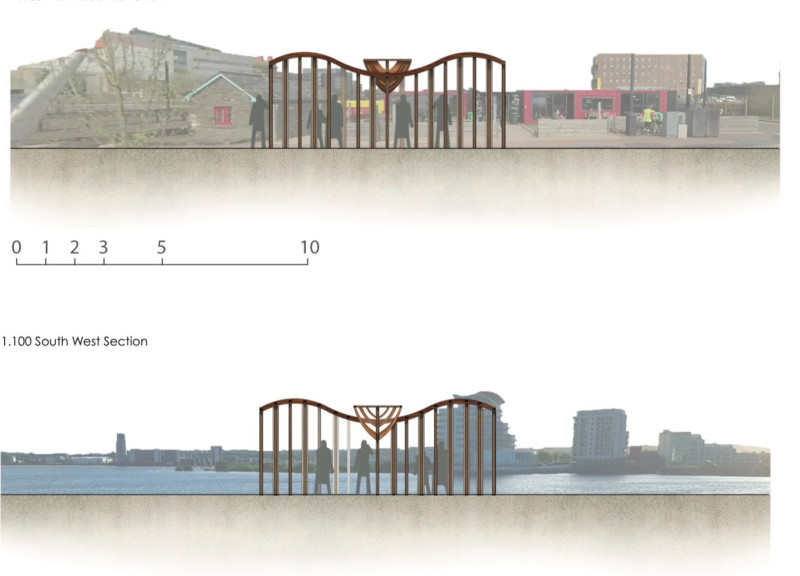5 key facts about this project
The Ocean Forest Pavilion sits on a small sandy area that overlooks Cardiff Bay. It combines the ideas of land and sea in a way that connects the natural landscape with visitors. The design encourages exploration and interaction, reflecting the movement of waves and the calmness of trees. It offers an engaging experience rooted in its coastal setting.
Structural Composition
The foundation consists of timber piles, which symbolize the connection to the forest and provide stability. This material choice reinforces the relationship between the built structure and the surrounding environment. By using timber, the design respects local resources and enhances its ecological context.
Design Dynamics
The roofs of the pavilion are shaped like waves and constructed with curved glulam timber. This undulating design creates a sense of fluidity, allowing light to flow through and cast interesting shadows inside. As people walk beneath these roofs, they are reminded of the sea and the idea of being under waves, helping to merge the experience of nature with the space.
Cultural Element
In the design, a boat made using traditional methods serves as a reminder of maritime culture. This element stands out as a point of interest while connecting the pavilion to historical practices of seafaring. It adds depth to the overall theme, inviting visitors to reflect on the cultural significance of the water.
The combination of these design elements results in a distinct environment. Visitors move along paths that weave beneath the wave-shaped roofs, enjoying a space that integrates craftsmanship, nature, and cultural storytelling. Each step offers a different perspective, showing how architecture can connect people to their surroundings in a meaningful way.



















































